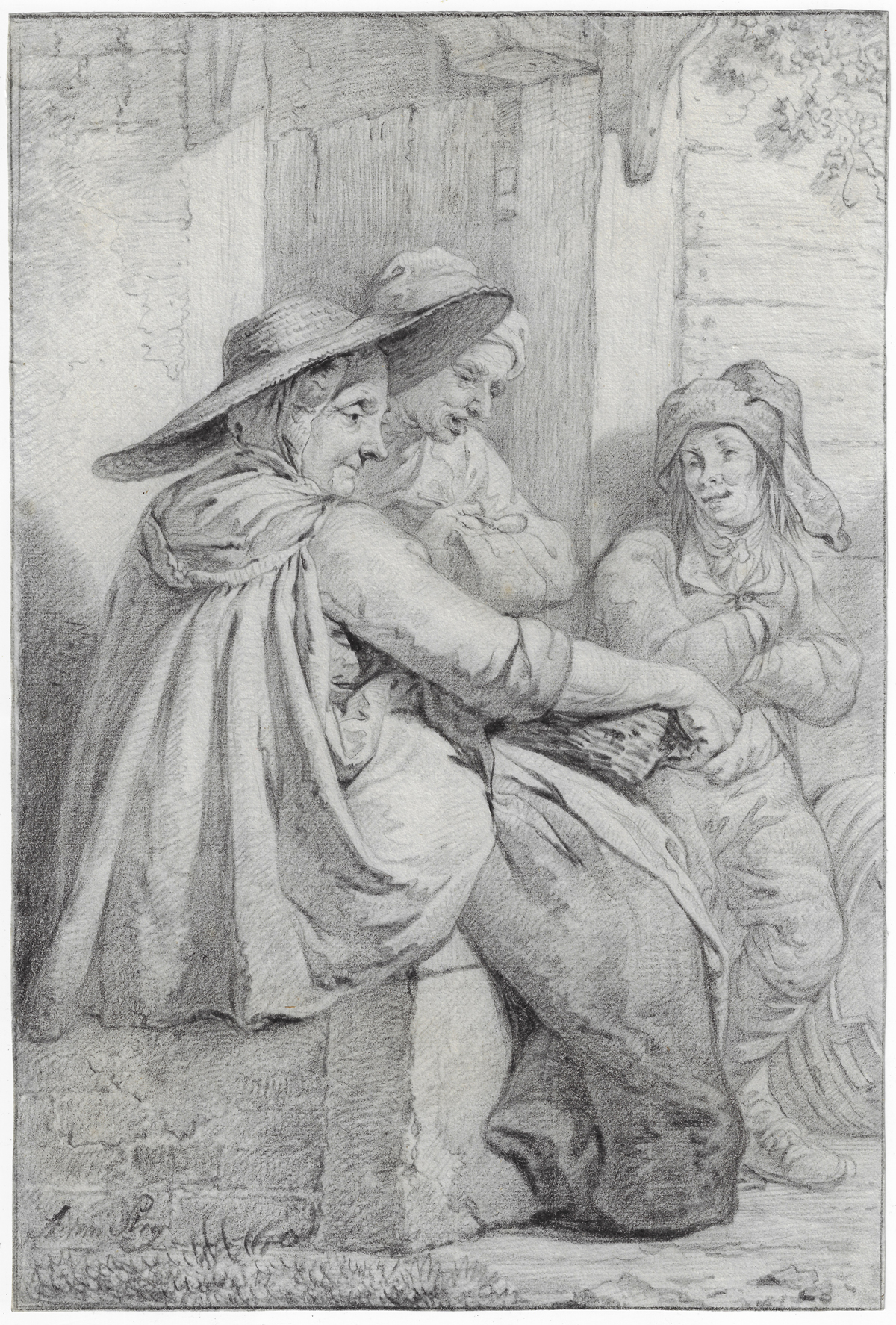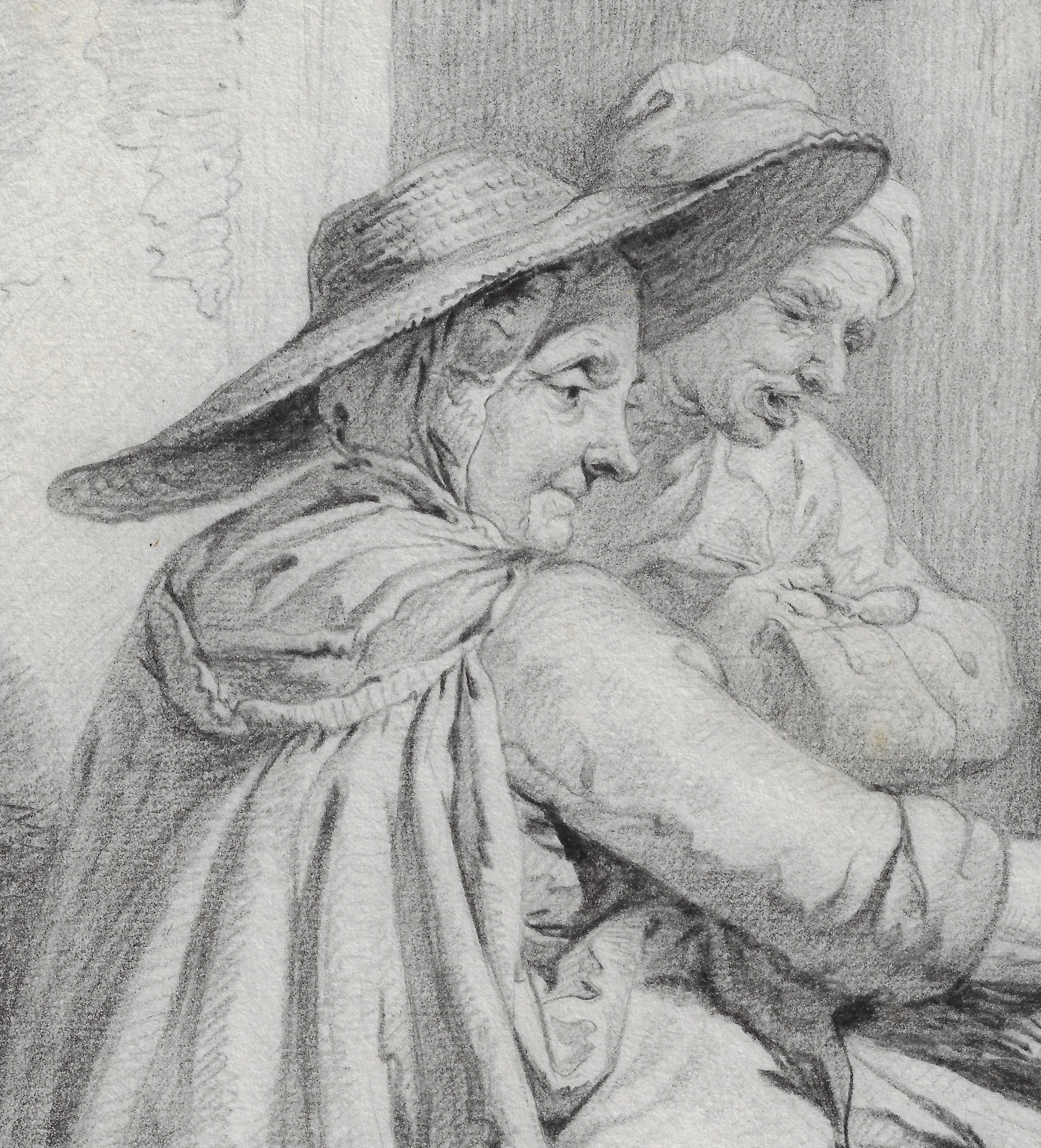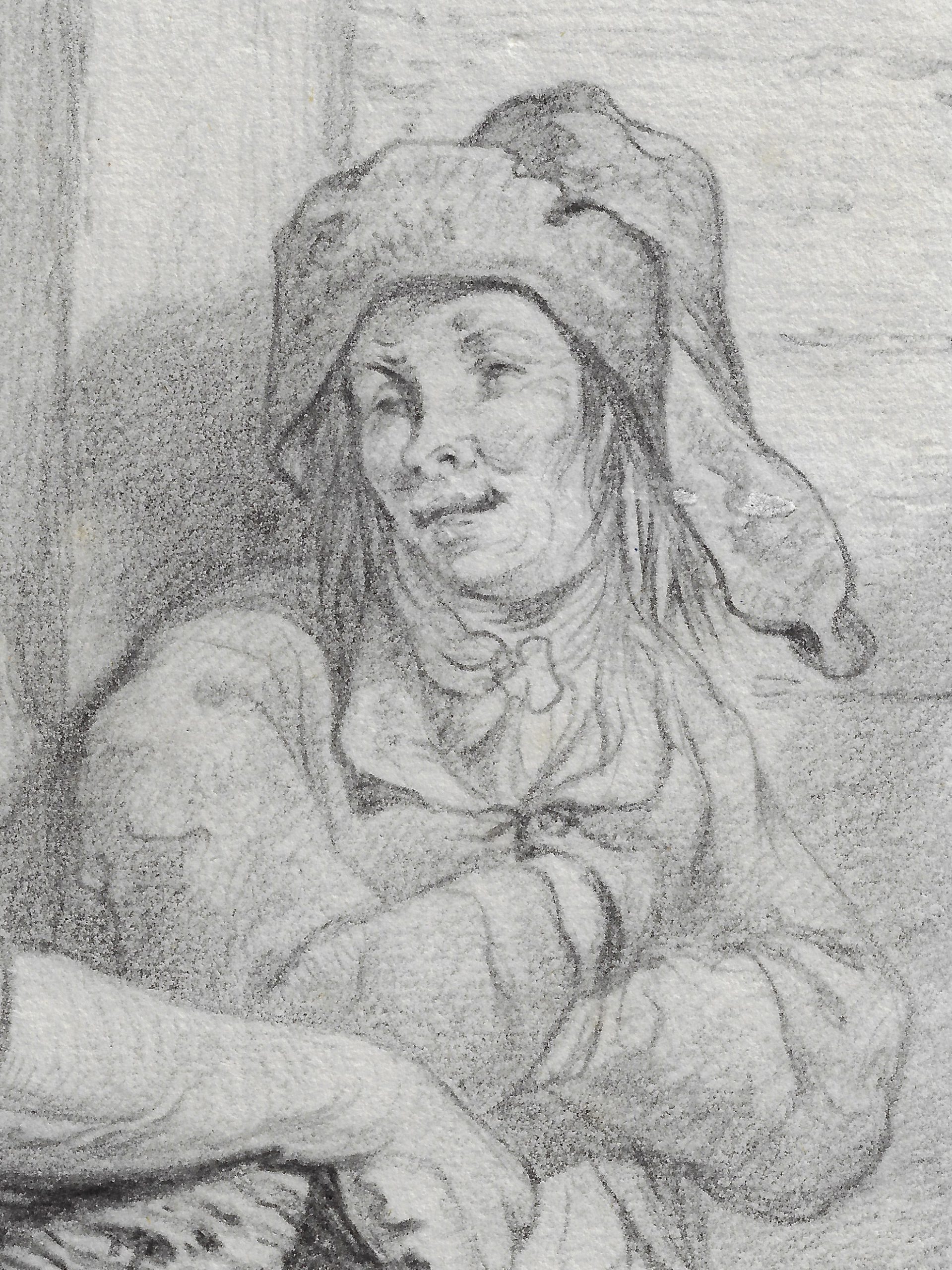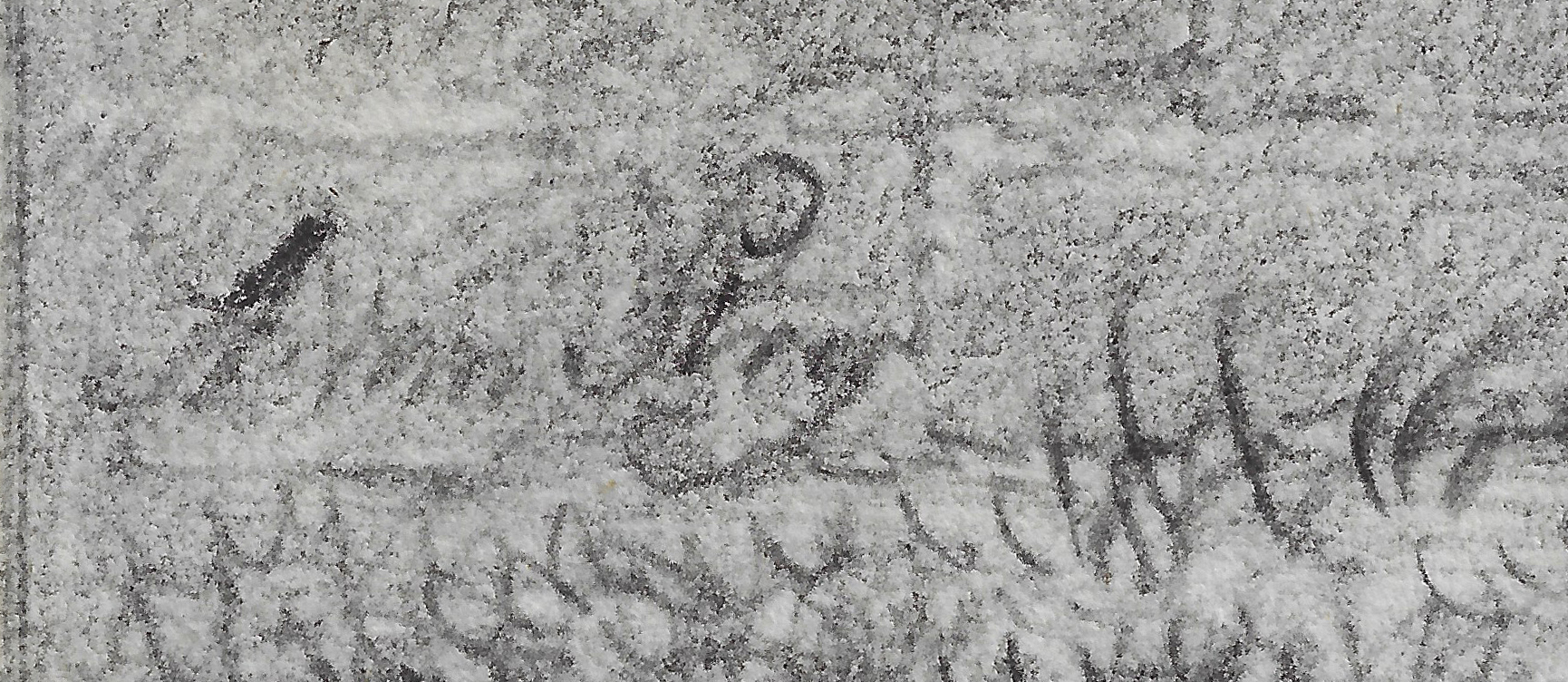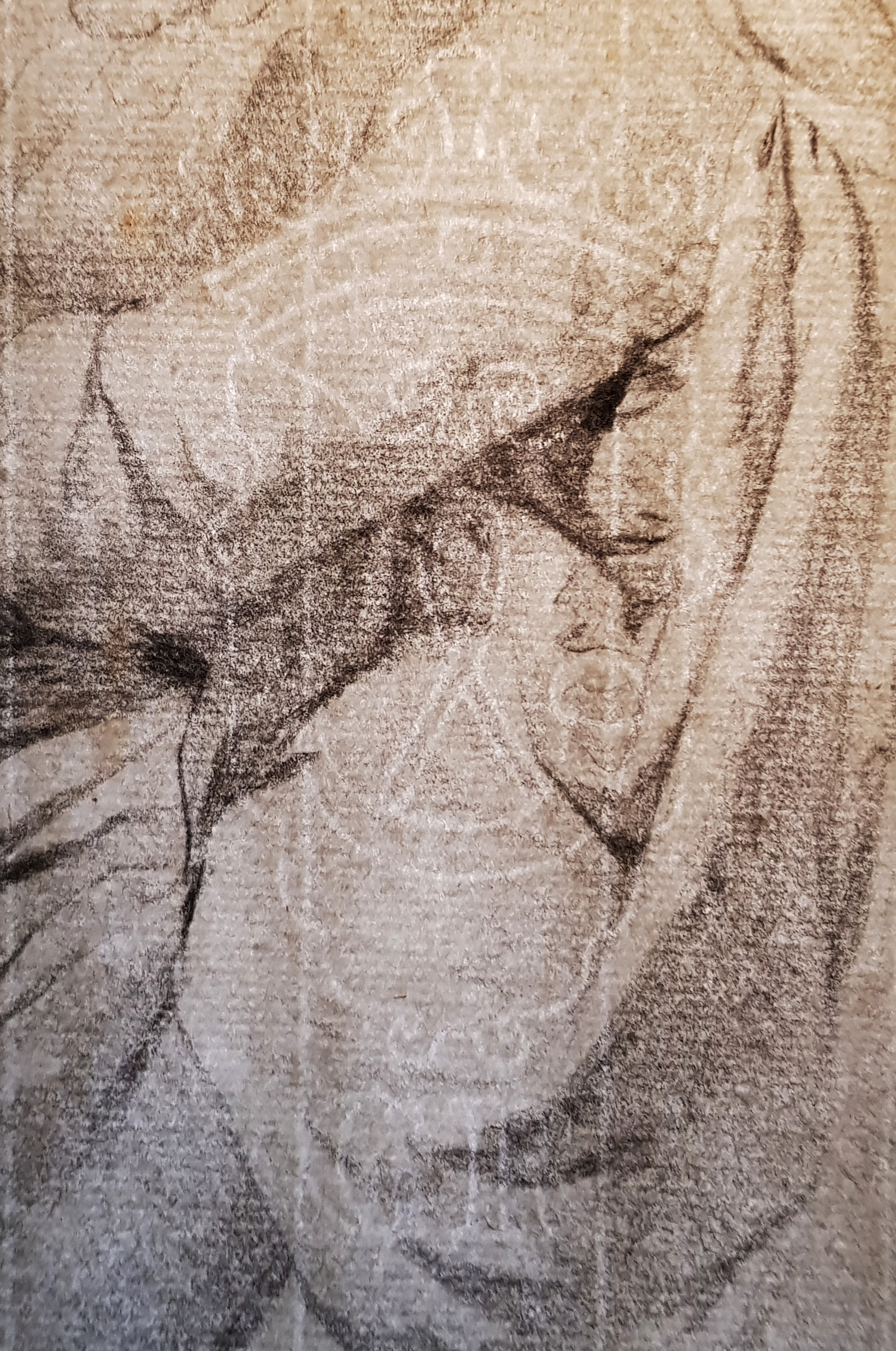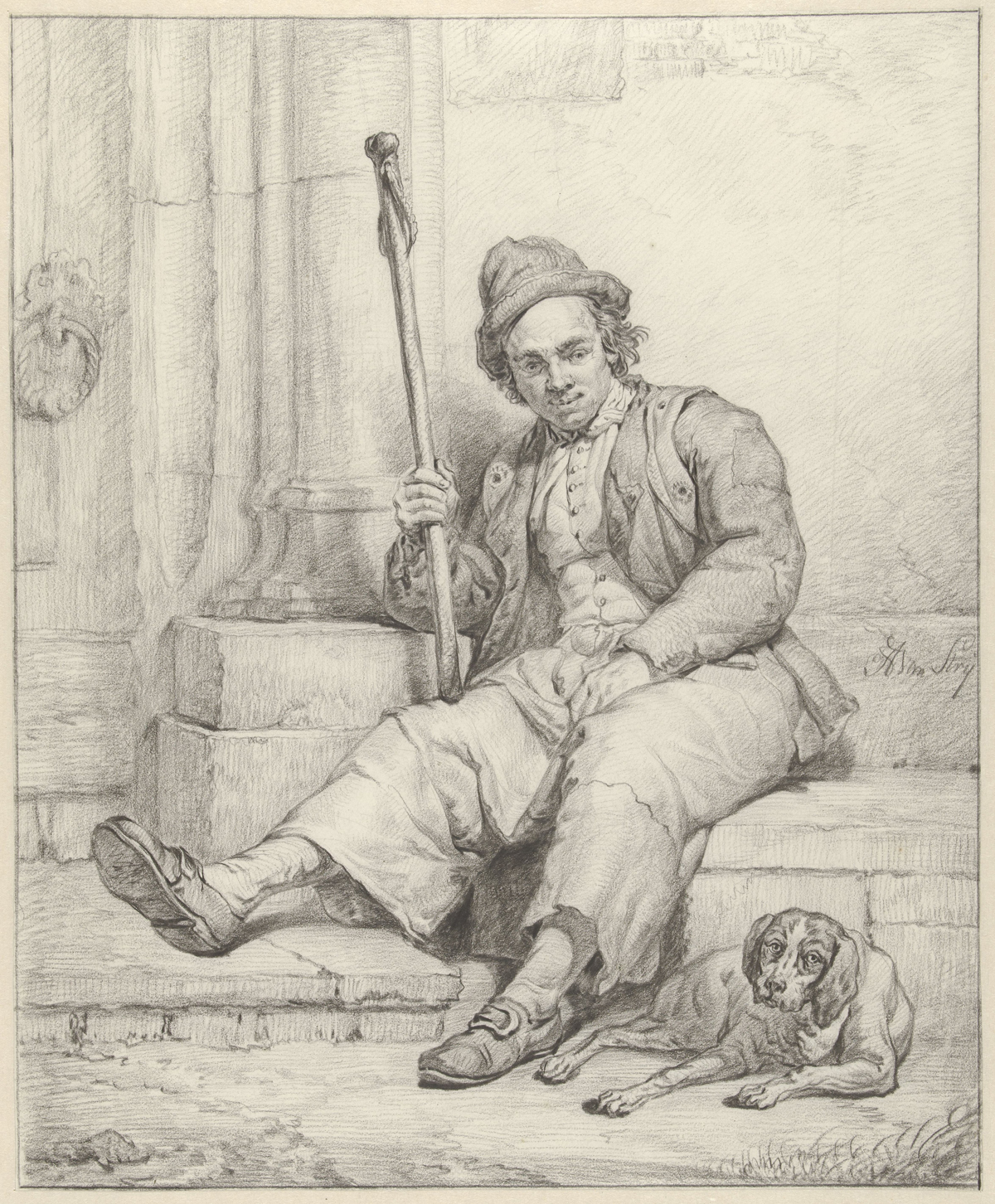ABRAHAM VAN STRIJ (Dordrecht 1753 – 1826 Dordrecht)
Abraham van Strij (Dordrecht 1753 – 1826 Dordrecht)
A Seated Woman with Two Other Figures
Black chalk, black chalk framing lines, watermark crowned shield with posthorn with letters GR underneath, 353 x 237 mm (13.9 x 9.3 inch)
Signed lower left ‘A van Stry’
Provenance
~ Professor Alfred Caspari (1914–1995), Frankfurt-am-Main
~ Private collection, Germany
***
Abraham van Strij was born in 1753 in Dordrecht as the son of the decorative painter Leendert van Strij and his wife Catharina Smak.1 Together with his brother Jacob, Abraham was taught the art of painting and drawing by his father, and continued his education with Joris Ponse (1723–1783), who himself had been taught by Aert Schouman. He was one of the founders of the Teekengenootschap Pictura in 1774, an artists’ society which continues to this day. Like his father and brother, Abraham specialised in large decorative wall paintings,2 which were fashionable during the period. He also painted smaller works, notably portraits, landscapes and interiors with genre scenes.
Van Strij was an active draughtsman and a large corpus of drawings by him is known, dating from the 1770s to the end of his life.3 They range from quick sketches to carefully finished and signed works, which were intended to be sold to collectors of ‘papierconst’, works on paper. He was deeply influenced by the great artists of the Golden Age, especially Aelbert Cuyp, whose drawing style he directly emulated in some works. Like other artists of the period, Van Strij also produced detailed copy drawings after paintings by earlier masters.
Among Van Strij’s most sensitive and accomplished sheets are those executed exclusively in black chalk, like the present work. Our drawing can for instance be compared to the Seated Man with Dog in the Rijksprentenkabinet, which is dated by Te Rijdt circa 1795-1800,4 and which serves as the frontispiece to the chapter on Van Strij’s drawings in the catalogue accompanying the exhibition held in the Dordrechts Museum and the Rijksmuseum Twenthe in 2000. Our sheet is likely to date from the same period, just before the turn of the century. The handling of the chalk, the various directions of hatching and the soft sfumato effects that the artist was able to achieve are highly comparable. It is known from autograph inscriptions that Van Strij frequently drew from models in the drawing academy Pictura, and it is possible that the present large and striking drawing was also made there.
SOLD
1. For the artist, see Charles Dumas (ed.), In helder licht. Abraham en Jacob van Strij. Hollandse meesters van landschap en interieur omstreeks 1800, exh. cat. Dordrecht (Dordrechts Museum) and Enschede (Rijksmuseum Twenthe), 2000, especially Chapter 1, ‘De levens van Abraham en Jacob van Strij’, by Floor de Graaf, pp. 9-23.
2. See Charles Dumas, ‘De decoratieve schilderkunst van Abraham en Jacob van Strij’, in Dumas, op. cit., pp. 45-100.
3. For Van Strij as a draughtsman, see R.J.A. te Rijdt, ‘De tekeningen van Abraham en Jacob van Strij’, in Dumas, op. cit., pp. 139-164.
4. Black chalk, 385 x 325 mm, signed ‘A van Strij’, inv. no. RP-T-1918-465; op. cit., pp. 138-139, cat. no. 122.
